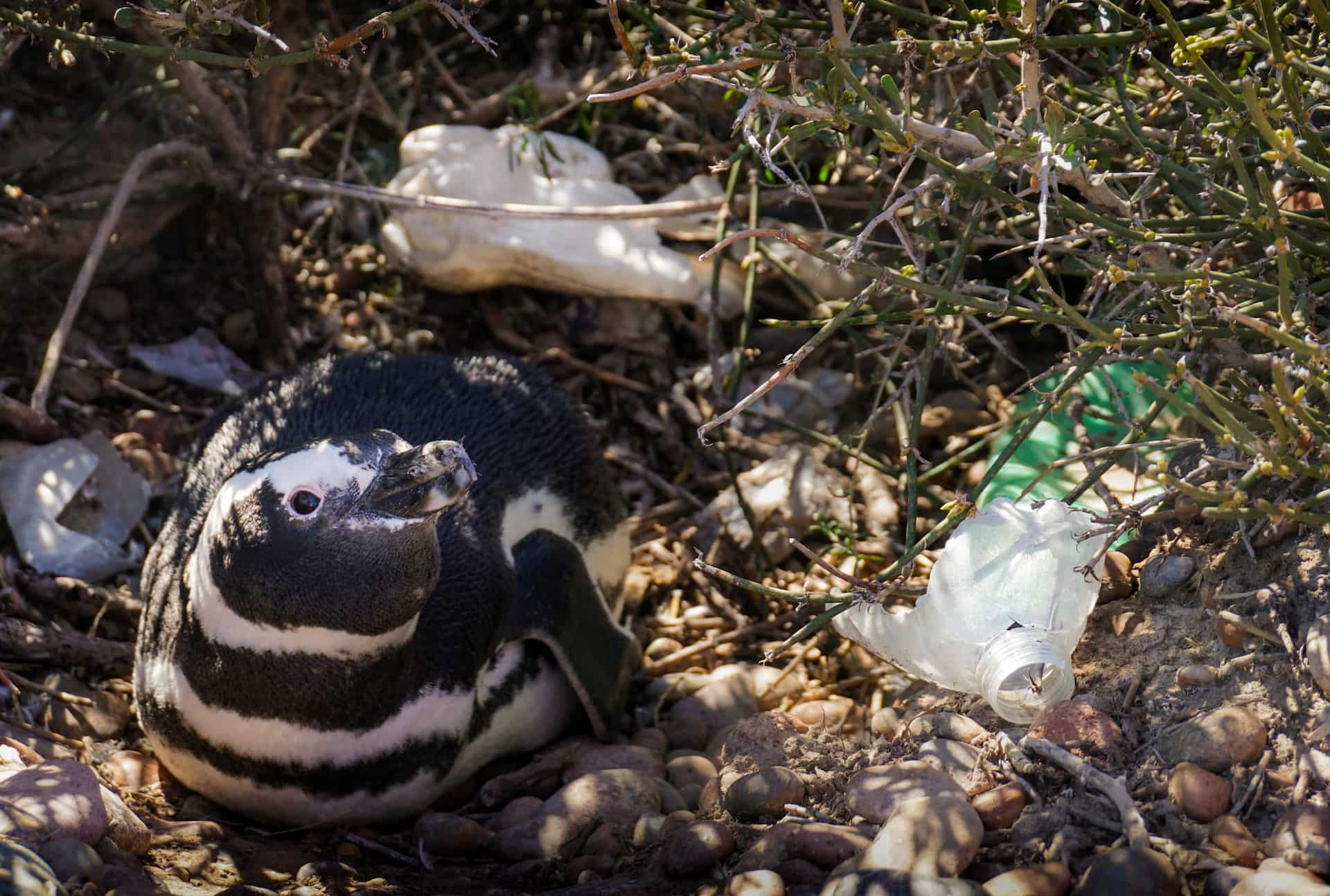How Is Plastic Pollution Affecting Penguins?
Get to know this year’s International Coastal Cleanup mascot

Recently, my work cleaning up and preventing plastic pollution took me to one of Earth’s most stunning and rugged places: the shores of Patagonia in Southern Argentina. You might be asking yourself, “How much plastic can there really be in such a remote corner of the globe?” The sad truth is that plastic pollution travels far and wide and is now found in areas hardly frequented by humans. So, we went to Patagonia to understand the scale of the impact plastics are having on this sensitive ecosystem and what we can do to help.
My Ocean Conservancy colleague, Allison Schutes, and I met with Lara Resnik, co-founder of El Pedral Reserva, a wildlife refuge on the Peninsula Valdes, which juts out into the vast Southern Atlantic Ocean. This area is a United Nations Educational, Scientific and Cultural Organization (UNESCO) World Heritage site and a haven for marine mammals such as southern right whales, sea lions, elephant seals and dozens of other ocean animals that can be seen throughout the year. The star of the show and focus of our trip was a colony of around 15,000 Magellanic penguins. One of 18 penguin species worldwide, this flightless bird flaunts a unique black and white feather pattern on the side of its body and head. Resnik and her team operate safe, conservation-first excursions so visitors like us can experience these charismatic waddlers in their nesting environment.
Get Ocean Updates in Your Inbox
Sign up with your email and never miss an update.
However, even in such a remote, protected area as Peninsula Valdes, alongside the penguins were plastics scattered across the pebbled shores. Large plastic fish-storage boxes, rope and line were mixed among plastic bottles and countless pieces of unidentifiable colored plastics. Some were lost from nearby fishing vessels, while other plastics clearly had weathered through great distances in the ocean before ending up there.
All marine animals in this highly biodiverse region are impacted by plastics, but penguins are especially vulnerable as they have to come onshore to nest in and among plastic pollution. A study in 2021 observed the stomach contents of diseased Magellanic penguins and found that half of them had ingested plastics. One individual had ingested 21 pieces of trash. Other studies on penguin species have found similar results.
Resnik often witnesses penguins becoming stuck or tangled in plastic pollution, such as fishing line, which restrains their movement and can lead to death.
“Every year, before the penguins return from their feeding migration, we clean up their habitat to maintain its pristine condition. However, more efforts are needed as the contamination problem grows larger each year,” said Resnik.
Each year for Ocean Conservancy’s International Coastal Cleanup® (ICC), we spotlight an ocean animal to remind us why we clean up our shorelines, ocean and waterways: to protect beloved ocean animals that deserve trash-free habitats. Following our encounter with these charismatic birds and seeing how they have been so impacted by plastic pollution, we were inspired to feature the Magellanic penguin as the 2024 ICC marine animal.

At Ocean Conservancy, we’ve been digging deep on how plastics are impacting animals across our ocean, and we can’t wait to share more about it with you. Until then, join me and countless other ocean lovers this Plastic Free July in making small changes in our daily lives to avoid unnecessary single-use plastics and reuse and recycle when we can. Cleanups, like the ones we joined in Patagonia, remind us that our individual actions matter and help protect the animals we love.
You can get involved in the fight to save marine animals from plastic pollution: Take action with Ocean Conservancy, then tell your friends, family and community about how our trash and plastics impact marine life and ecosystems worldwide and volunteer for this year’s International Coastal Cleanup. You can also clean up anywhere, anytime and track it with our Clean Swell® app. Protecting penguins and other sea life from the impacts of plastic pollution will take all of us doing our part.